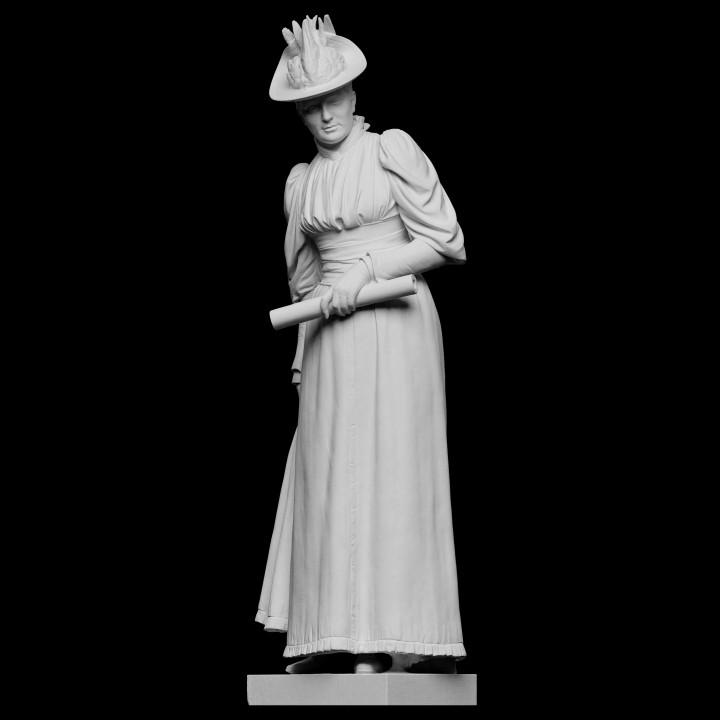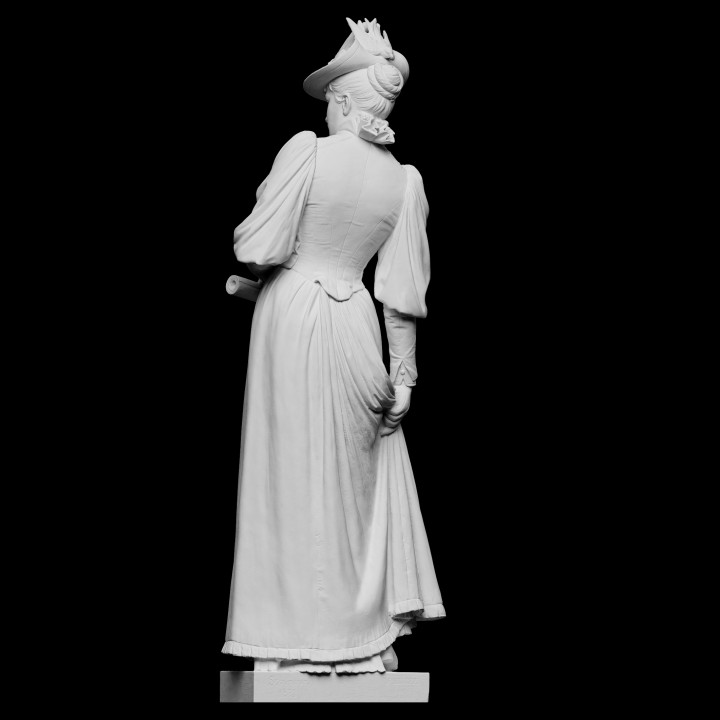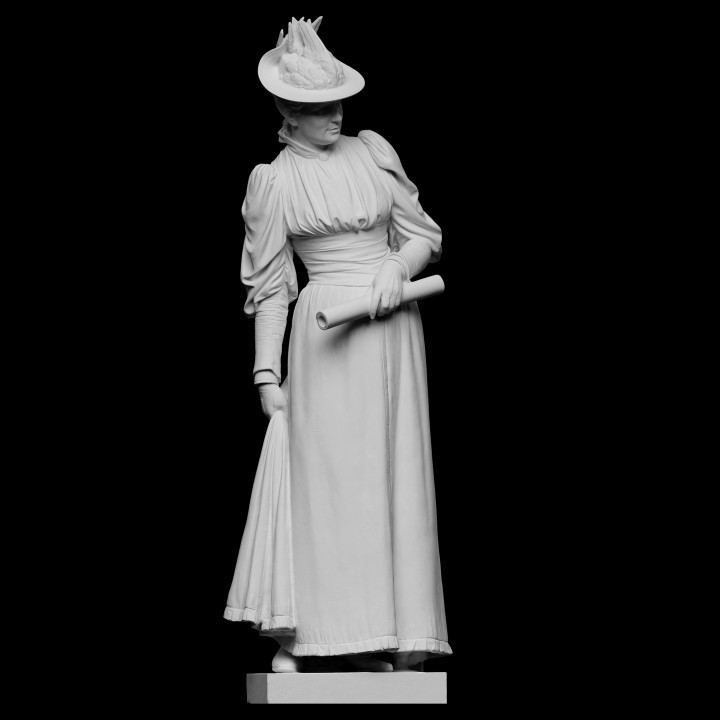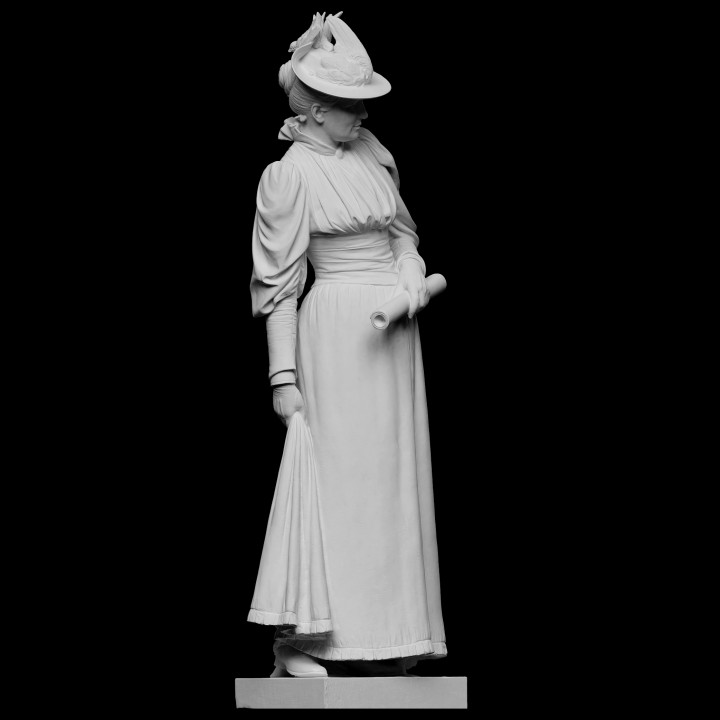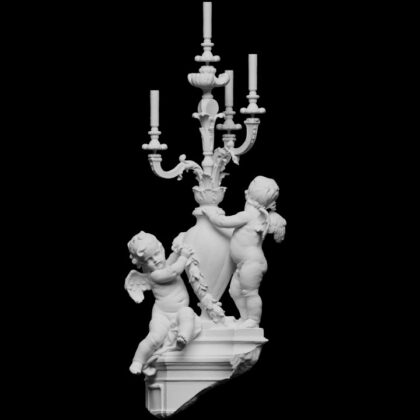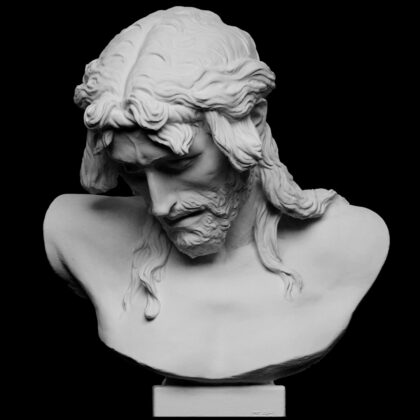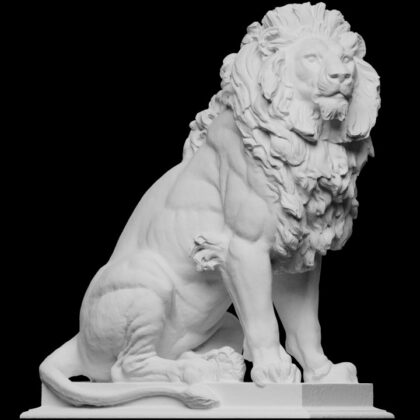With her fashionable dress and up-to-the-minute plumed hat, Vilhelm Bissen’s ‘Lady’ might have stepped straight out of a magazine from her day. With the lift of her dress, the exposed shoe, and the swaying spectator’s pose she might be a guest at an art exhibition.
Sculpture does not concern itself with ephemera, least of all marble sculptures. Nevertheless, Bissen sought to unite the immediate and the monumental.
On his travels to Paris Bissen came across a more realistic vein of sculpture than the classical idealism familiar to him from the works of his father, H.W. Bissen (1798-1868), and Bertel Thorvaldsen (1770-1844). The heritage from the grand father figure of Danish sculpture, Thorvaldsen, was not just a gift; it was also a burden than Bissen’s contemporaries found it difficult to liberate themselves from. Blissen, by contrast, challenged tradition and gradually moved away from Thorvaldsen towards the realism that characterised the art of the times.
With its virtuoso realism, ‘A lady’ represents a high-water mark within Danish sculpture of the day. It is also, however, a work that challenges the limits of what sculpture can accomplish, and indeed the lady had no immediate company.
-Peter Nørgaard LarsenChief Curator, Senior Researcher
| Afmetingen | N/B |
|---|

